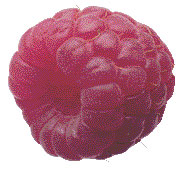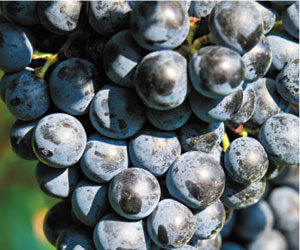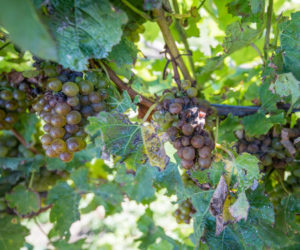Country Wine Case Study:
Ingredients
5.0 lbs. (2.3 kg) fully ripened or frozen raspberries placed in a fine mesh straining bag
7 pints (3.3 L) water
2.0 lbs. (0.91 kg) corn sugar or table sugar (Before adding the sugar, use a sugar scale hydrometer to determine the level of sugar in the must. Adjust sugar addition to match the desired potential alcohol level.)
1/2 tsp. acid blend (Before adding acid blend, use an acid test kit to determine if an acid addition is necessary — target acidity should be 0.65 to 0.80).
10 drops liquid pectic enzyme (or, if using dry pectic enzyme follow manufacturer’s directions)
1 tsp. yeast nutrient with energizer
1 Campden tablet, crushed and dissolved
After 24 hours, add: 1 package wine yeast (Red Star Côte des Blancs, Premier Cuvée, Pasteur Champagne, Lalvin K1V-1116, or EC-1118, Fermiblanc or R2)
After fermentation is complete add: 1 Campden tablet, crushed and dissolved fining agent, per package instructions.
One month to six weeks after fermentation is complete, or when racking after fining add: 1 crushed and dissolved Campden tablet.
Step-by-step
1. Pick your raspberries when they are fully ripe. Remove all stems, leaves and foreign matter. Cut and discard any rotten fruit. Wash and drain the berries. To contain pulp and tiny seeds, place fruit in a fine mesh nylon straining bag. If frozen fruit is used, thaw. Lightly mash fresh fruit. Place juice into 2–2.5-gallon (7.6–9.4 L) primary fermenter. To keep all of the pulp in the straining bag, tie the top of the bag. Place the fruit filled bag in the primary fermenter. Fruit should be submerged.
2. Combine water and sugar in a sauce pot and heat to dissolve the sugar. Cool. Pour the sugar solution into primary fermenter. Hydrometer reading will be 21–22 °Brix. Take an acid reading using an acid test kit. Adjust acid levels to 0.65–0.8 (remember, 1 teaspoon of acid blend per gallon (3.8 L) will increase the acid level by approximately 0.15).
3. Stir in acid blend (if needed), pectic enzyme and yeast nutrient and Campden tablet. Cover primary fermenter and let sit 24 hours. In the meantime, make a yeast starter to expand the yeast colony. Yeast starter recipe: Bring to boil 1 cup orange juice and 2 tablespoons sugar. Let solution cool to 70–80 °F (21–27 °C). Stir in 1/2 teaspoon complete yeast nutrient. To rehydrate yeast, measure 1/4 cup warm water (100–105 °F/37–40 °C), then sprinkle yeast on top. Let yeast sit for 5 to 10 minutes. Stir to dissolve.
4. Add the yeast starter to the cooled orange juice solution. Sanitize a 750 mL wine bottle or pint-size jar. Pour orange juice and yeast solution into clean bottle. Cover with a clean cloth or fit bottle with an air lock and #2 drilled rubber stopper. Yeast starter will be ready in 12 to 24 hours. Stir the yeast into the must (juice). Cover. Stir the must vigorously twice daily. After three days or when hydrometer reading is 8 °Brix (specific gravity 1.030), lightly press juice from bag and transfer to the secondary fermenter. Siphon the remaining wine from the primary container into a glass secondary fermenter. Attach a fermentation lock half filled with water. Discard pulp and clean straining bag.
5. When fermentation is complete (-1.5–0 °Brix (specific gravity 0.994 to 1.000), rack off the sediment into another clean and sterile glass carboy. Stabilize the wine by adding one Campden tablet, crushed and dissolved in a small amount of warm water. Once fermentation is complete, add the fining (clearing) agent according to manufacturer’s directions. Let sit 2–3 weeks and siphon the wine away from the sediment. Discard the sediment.
6. Let sit 6 weeks and rack again. Rack a third time after another 6 weeks have elapsed. When clear and stable, taste the wine. Adjust the sweetness of the wine to suit your preference. If a dry wine is preferred, check the sulfite level and adjust to 35–45 ppm free sulfite, filter, and bottle. To make a sweet wine dissolve 1/2 teaspoon potassium sorbate in a small amount of water. Add to the wine and stir thoroughly.
7. Then perform sugar bench trials to determine the level of sweetness that best enhances the fruit. Compare the aromas, flavors, acid balance, and aftertaste. Taste and determine the residual sugar level that best accents the wine. Do the necessary math by multiplying the amount of sugar needed for the volume of wine to be bottled. Stir thoroughly. Check the sulfite levels, adjust if necessary and filter the wine for a brilliant appearance. Siphon wine in clean, sanitized bottles. Enjoy!








